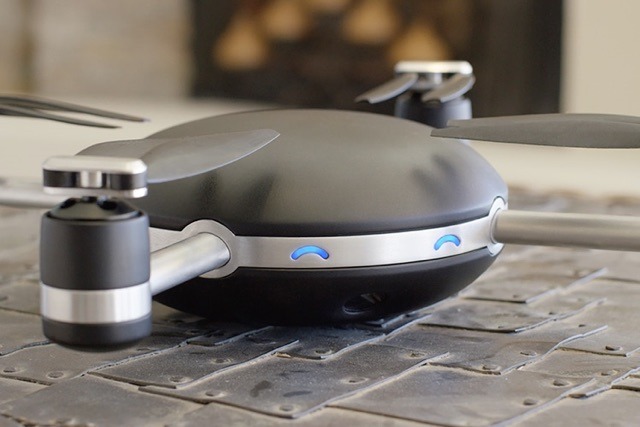Citing production issues, the makers of Lily — an autonomous, iOS-connected drone that aimed to simplify aerial photography — Â have announced that their project has been completely canceled, and refunds will be issued to customers over the next 60 days.
Introduced in 2015, the Lily was pitched as a self-flying drone that would make it easy to record footage of people on a range of outdoor activities, such as sports or a walk. Users simply had to throw the drone into the air, with it automatically taking flight and recording nearby activities.
A total of $34 million from approximately 60,000 pre-orders were received, but a company blog post advises this wasn't enough to start the drone's production. Founders Antoine Balaresque and Henry Bradlow jointly told supporters this week that the drone had received good feedback from the beta program, but the company had been "racing against a clock of ever-diminishing funds."
Attempts to secure financing to start manufacturing of the drone over the last couple of months failed, the founders said. They will now wind down the company and issue refunds to customers.
Preorders will be reimbursed over the next 60 days, with payments returning to credit and debit cards used for the original transaction, though there is a form available for cases where the card has expired to arrange alternate payments. Considering the financial difficulties, it is unclear if refunds will be made in full to the project's backers.
At launch, Lily showed promise as a relatively easy to use and hardy drone that simplified video capture of activities. It was also a cheap prospect for those pre-ordering it, as early orders received the introductory price of $499 plus shipping, with the final release price expected to be $999.
An accompanying wearable beacon would have told the drone what to follow and circle, complete with a waterproof case that could be worn on the wrist. The compact puck also had a microphone, intended to record sound closer to the subject for later inclusion in the final video.
The onboard drone camera was advertised take 12-megapixel still images, as well as record 1080p video at 60 frames per second, or 720p at 120 frames per second. The official iOS app would have shown a live video feed from the drone, and let users change camera settings during flights, as well as providing editing and sharing options once flights had completed.
 Malcolm Owen
Malcolm Owen







-m.jpg)






 William Gallagher
William Gallagher



 Chip Loder
Chip Loder
 Mike Wuerthele
Mike Wuerthele



-m.jpg)






16 Comments
Saturated market maybe?
I had one on pre-order. What a disappointment. This is exactly the sort of drone I'm after. Just something simple that would follow a beacon in my pocket while I was kayaking (takes off from water) and snowboarding. Also the ability to fly a pre-programmed flight path. Oh well. Time to find another. I believe there's one Australian manufacturer of something similar. I think I even saw something by gopro? You can be sure it's over priced if it is.
Just buy a DJI Mavic Pro, completely blows all of these drones out of the water (no pun intended)